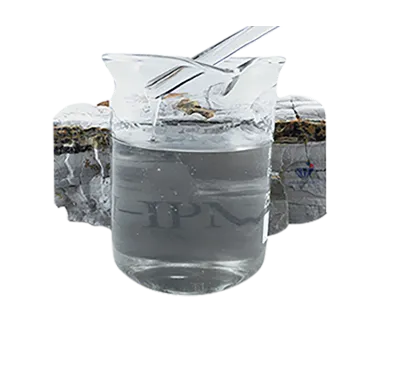
Dec . 17, 2024 13:33 Back to list
hydroxyalkyl cellulose
The Versatility of Hydroxyalkyl Cellulose A Comprehensive Overview
Hydroxyalkyl cellulose (HAC) is a vital ingredient that bridges the gap between natural and synthetic substances. With its unique properties, HAC finds wide applications in various industries, including pharmaceuticals, food, personal care, and construction. This article explores the chemistry, properties, applications, and future trends of hydroxyalkyl cellulose, highlighting its significance in modern formulations.
What is Hydroxyalkyl Cellulose?
Hydroxyalkyl cellulose is a non-ionic, water-soluble cellulose derivative. It is produced by substituting hydroxyl groups on the cellulose molecule with hydroxyalkyl groups, such as hydroxyethyl or hydroxypropyl. This modification enhances the solubility and functionality of cellulose, thereby expanding its applications beyond traditional use. HAC is predominantly available in various grades, with different degrees of substitution and molecular weights, tailoring it to specific application needs.
Chemical Properties
The chemical structure of hydroxyalkyl cellulose consists of a linear chain of glucose units characterized by ether linkages. The introduction of hydroxyalkyl groups changes the solubility of cellulose in water, making it readily dispersible in both hot and cold water. This property is crucial for applications requiring consistent viscosity control. Depending on the substitution pattern and chain length, hydroxyalkyl cellulose exhibits unique characteristics such as gel formation, thickening, and film-forming abilities, all of which are important for various formulations.
Applications
1. Pharmaceuticals In the pharmaceutical industry, HAC serves as a crucial excipient. It is utilized as a binder in tablet formulations, providing stellar mechanical strength and controlled release properties. Additionally, it acts as a thickener in syrups and ointments, enhancing the texture and stability of the product.
hydroxyalkyl cellulose

2. Food Industry HAC is widely used as a food additive, providing thickening and stabilizing effects in sauces, dressings, and dairy products. Its ability to retain moisture increases the shelf life of products while ensuring the desired mouthfeel. HAC is also recognized as a safe ingredient by regulatory authorities, making it an ideal choice for health-conscious consumers.
3. Personal Care Products The cosmetic industry benefits greatly from the versatility of hydroxyalkyl cellulose. It is often included in lotions, creams, shampoos, and gels, where it functions as a thickener, emulsifier, and stabilizer. Its non-irritating nature makes it suitable for sensitive skin formulations.
4. Construction In construction, hydroxyalkyl cellulose is used in cement-based products and mortars. It improves workability and enhances water retention, allowing for better adhesion and durability. When incorporated into tile adhesives and wall coatings, HAC contributes to the overall strength and performance of building materials.
Future Trends
As sustainability becomes increasingly important, the demand for natural and eco-friendly ingredients is rising. Hydroxyalkyl cellulose, derived from renewable cellulose, meets consumer preferences for sustainable products. Innovations in biopolymer science could further enhance HAC's functionality, enabling the development of novel products that meet contemporary ecological and performance standards.
Moreover, ongoing research into the applications of hydroxyalkyl cellulose in drug delivery systems is promising. The potential to create targeted and controlled drug release formulations could revolutionize how medications are administered and absorbed within the body.
Conclusion
Hydroxyalkyl cellulose represents a fascinating blend of chemistry and innovation, marking its presence across multiple industries. Its properties—such as solubility, thickening ability, and stability—make it an indispensable ingredient in various formulations. As research and development continue to advance, half of the potential uses of hydroxyalkyl cellulose remain to be explored. Its role in creating sustainable, high-performance products ensures that it will remain a significant player in the formulation landscape for years to come. Furthermore, as global industries evolve, hydroxyalkyl cellulose is poised to adapt and thrive, catering to the needs of diverse applications, proving its lasting relevance.
-
Versatile Hpmc Uses in Different Industries
NewsJun.19,2025
-
Redispersible Powder's Role in Enhancing Durability of Construction Products
NewsJun.19,2025
-
Hydroxyethyl Cellulose Applications Driving Green Industrial Processes
NewsJun.19,2025
-
Exploring Different Redispersible Polymer Powder
NewsJun.19,2025
-
Choosing the Right Mortar Bonding Agent
NewsJun.19,2025
-
Applications and Significance of China Hpmc in Modern Industries
NewsJun.19,2025







